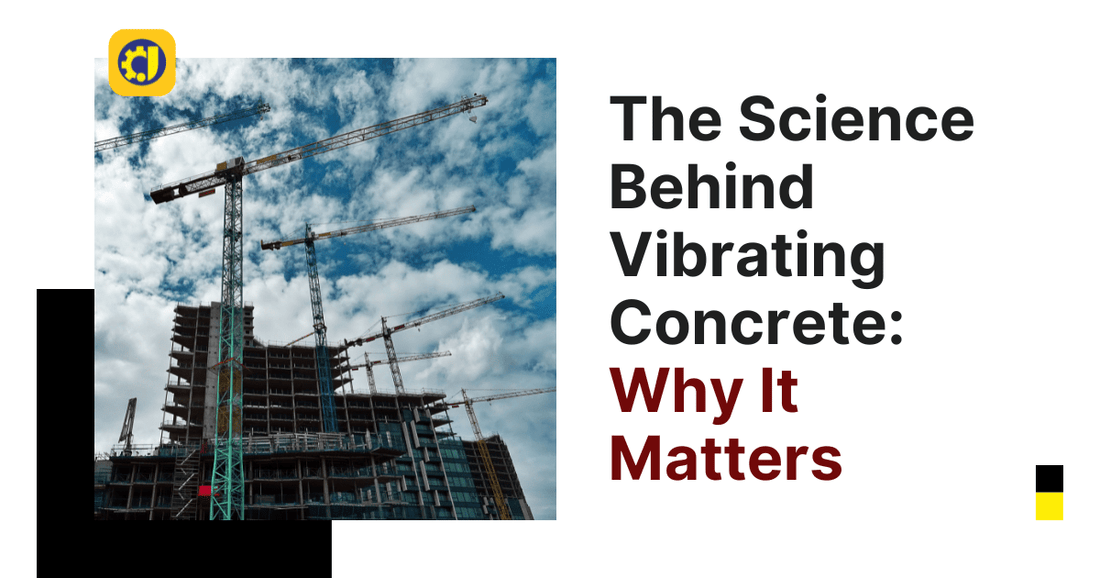
The Science Behind Vibrating Concrete: Why It Matters
Concrete is the backbone of modern infrastructure. From towering buildings to solid bridges, its strength defines the durability of structures. But did you know that vibrating concrete during placement is a science-backed process that significantly enhances its quality?
Let’s dive into how this works — and why tools like the Concrete needle vibrator are vital in this process.
What is Vibrating Concrete?
Vibrating concrete refers to the process of removing trapped air from freshly poured concrete.
During placement, air bubbles and excess water get trapped in the mix. If left unchecked, they create weak spots and reduce strength.
By vibrating the concrete, these air pockets are forced out, resulting in a denser and more durable structure.
Why Concrete Compaction Matters
Proper compaction ensures that the concrete fills every corner of the formwork.
Additionally, it enhances bonding with reinforcement bars, reducing voids that can lead to corrosion over time.
Without compaction, surfaces become porous, flaky, and more prone to environmental damage.
How Does Vibration Work in Concrete?
Concrete vibration involves applying mechanical energy to the concrete mixture. This energy allows particles to settle closer together.
As a result, trapped air and excess moisture rise to the surface.
Eventually, a smoother, stronger, and more uniform concrete structure is achieved.
The Role of the Concrete Needle Vibrator
A Concrete needle vibrator is a handheld tool used on-site to apply internal vibration directly into the concrete mix.
The needle-shaped head is inserted into the freshly poured concrete. It then vibrates at high speed, compacting the material effectively.
Because of its shape and ease of use, it reaches tight spaces and ensures full compaction even around rebar.
Key Benefits of Vibrating Concrete
1. Increases Structural Strength
Since air is removed, the final product is more solid and reliable.
Moreover, this reduces the chance of cracks and structural failure in the long run.
2. Enhances Durability
With fewer voids, water and other corrosive agents can’t penetrate easily.
Therefore, structures last longer with minimal maintenance.
3. Improves Surface Finish
The result is a smoother finish, especially important for exposed concrete surfaces.
It also reduces the need for surface repairs after curing.
Different Methods of Concrete Vibration
There are a few standard techniques used on construction sites. Each is suited for specific scenarios:
1. Internal Vibration
Also called needle vibration, this is where the Concrete needle vibrator comes in.
The tool is inserted directly into the concrete and moved around systematically.
2. External Vibration
Here, vibrators are attached to the outside of formwork.
It’s ideal for pre-cast components or when internal vibration is not possible.
3. Surface Vibration
Flat vibrators work on slabs and pavements.
This method is quicker but less effective in deep sections.
When to Use a Concrete Needle Vibrator
Knowing when and where to use the Concrete needle vibrator makes a difference.
Use it when:
- Pouring foundations or beams
- Working with dense rebar layouts
- Casting columns or vertical structures
Also, ensure the vibrator is applied as soon as concrete is poured, not after it begins to set.
How Long Should You Vibrate Concrete?
It depends on the concrete mix and element size.
Generally, 5 to 15 seconds per insertion is enough.
However, always look for signs like:
- Air bubbles rising
- Surface leveling
- Change in pitch or sound
Too much vibration may lead to segregation, while too little leaves air pockets.
Mistakes to Avoid While Vibrating Concrete
Even though the process seems simple, mistakes can be costly.
- Over-vibration: Can cause the mix to separate, weakening the structure.
- Under-vibration: Leaves trapped air, reducing strength.
- Fast withdrawal: Pulling the vibrator out too fast can create holes.
- Irregular pattern: Skipping areas leads to uneven compaction.
Therefore, always follow a systematic insertion pattern and timing.
Conclusion: Quality Concrete Needs Vibration
In conclusion, vibrating concrete isn’t just an extra step — it's a critical part of ensuring quality and durability.
With the right tools, like the Concrete needle vibrator, construction professionals can guarantee better results, fewer repairs, and longer-lasting structures.
So, the next time you see concrete being poured, remember: the science behind the vibration is what holds it all together.